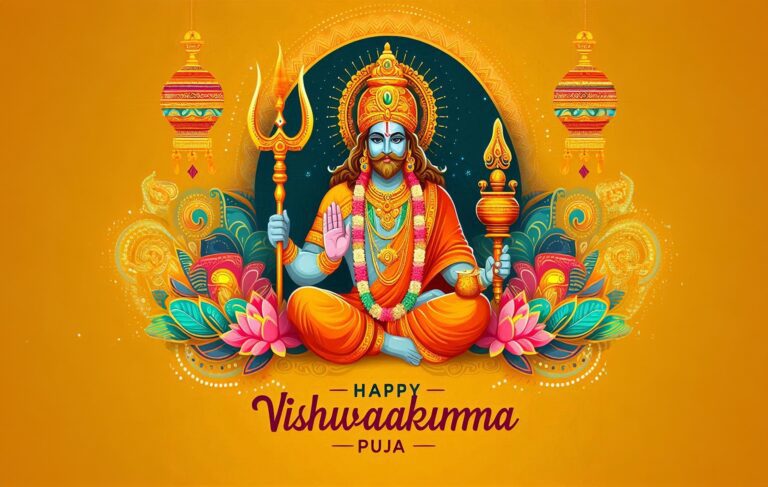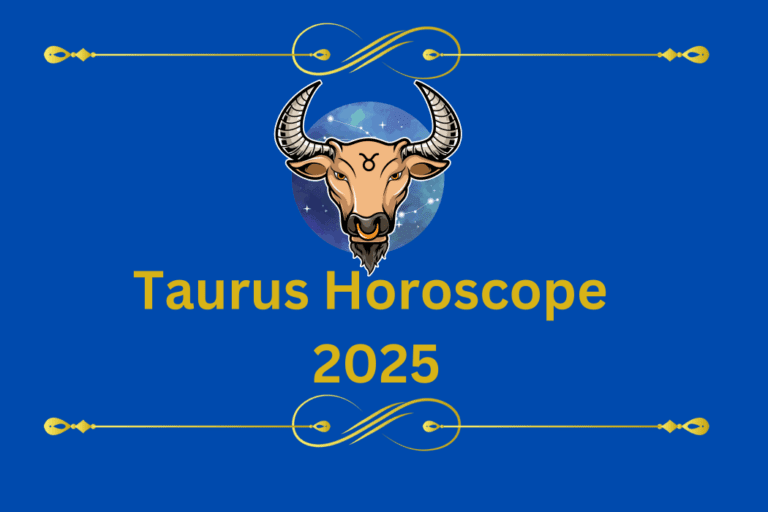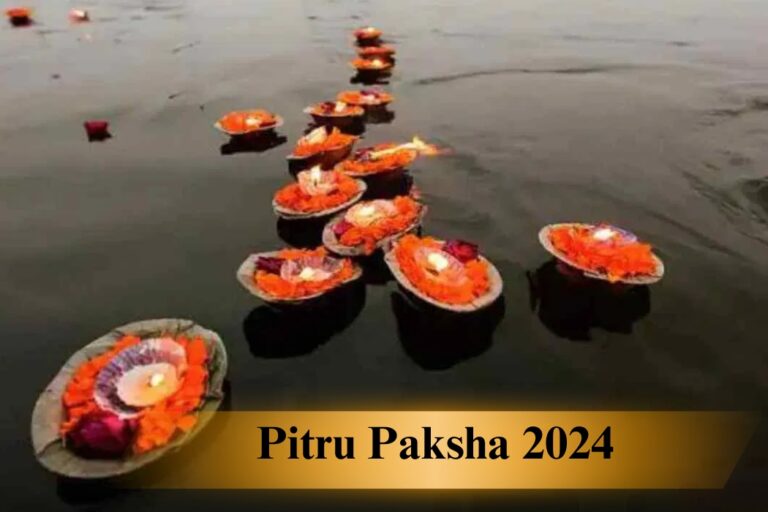Diwali 2023: Date, History, Lakshmi Puja and Significance
Worshiping Goddess Lakshmi (Laxmi Pujan) as per the rituals on the day of Diwali brings happiness and prosperity in the house and invokes her blessings for all.
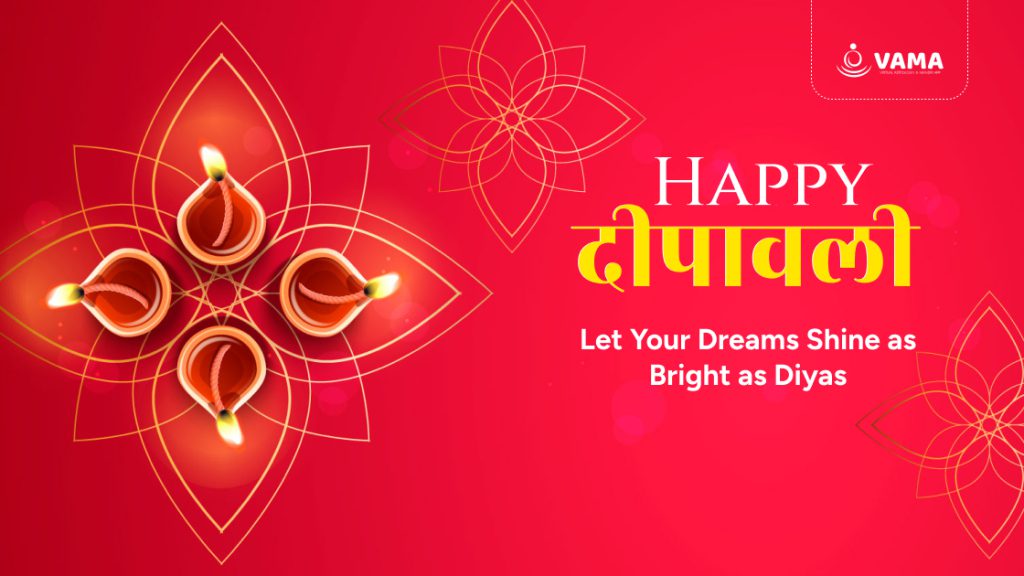
Diwali is one of the most vibrant and eagerly awaited festivals in India and among Hindus worldwide. Celebrated with great fervour, it symbolises the victory of light over darkness, good over evil, and knowledge over ignorance. In this blog, we’ll explore the significance, traditions, pooja and rituals, and the cultural splendour that surrounds this magnificent festival.
The Significance:
Diwali, derived from the Sanskrit term, “Deepavali”, literally translates to “row of lamps,”. It is a festival that holds deep spiritual and cultural significance. It typically lasts for five days, with each day representing a unique facet of the celebration. The central theme, however, revolves around the triumph of Lord Rama over the demon king Ravana, marking the return of Lord Rama to Ayodhya after 14 years in exile.
The Traditions:
Diwali, also spelled Divali, is one of the major religious festivals in Hinduism, Jainism, and Sikhism, that lasts from the 13th day of the dark fortnight of Ashvina to the 2nd day of the bright fortnight of Kartik month. Typically, the following traditions are followed with pomp and show during this 5-day long period.

- Lighting of Lamps and Candles: Diyas (clay lamps), candles, and decorative lights illuminate homes, streets, and public places during Diwali. This act symbolises the dispelling of darkness and the welcoming of prosperity.
- Rangoli: Intricate and colourful patterns drawn on the floor using coloured powders, rice, or flower petals are a common sight during Diwali. They not only enhance the aesthetic beauty of homes but also signify a warm welcome for guests.
- Festive Decorations: Homes are adorned with vibrant decorations, including colourful drapes, flower garlands, and torans (door hangings). The aim is to create a festive and inviting atmosphere.
- Sweets and Savories: Diwali is incomplete without indulging in a variety of sweets and snacks. Popular treats include laddoos, jalebis, and savoury snacks like samosas.
- Exchanging Gifts: It’s customary to exchange gifts during Diwali as a gesture of love and goodwill. Families and friends exchange presents, which can range from traditional Indian clothes to electronic gadgets.
- Fireworks: The night of Diwali is marked by dazzling fireworks displays, filling the sky with colourful explosions. This tradition adds to the festive spirit and creates a breathtaking spectacle.
- Prayers and Puja: Many families visit temples during Diwali and perform Lakshmi Puja, a prayer dedicated to the goddess of wealth. It’s believed that she blesses homes with prosperity and good fortune.
Additionally, the doors and windows of houses are kept open in the hope that Goddess Lakshmi will find her way inside and bless the residents with wealth and success. - Gambling: Games of chance, particularly card games, are promoted as a means of securing good fortune for the forthcoming year. This practice is rooted in the recollection of games involving dice played by Shiva and Parvati on Mount Kailasa, as well as similar contests between Radha and Krishna. As a customary homage to Goddess Lakshmi, the goddess of wealth, it is customary for the female player to emerge as the victor.
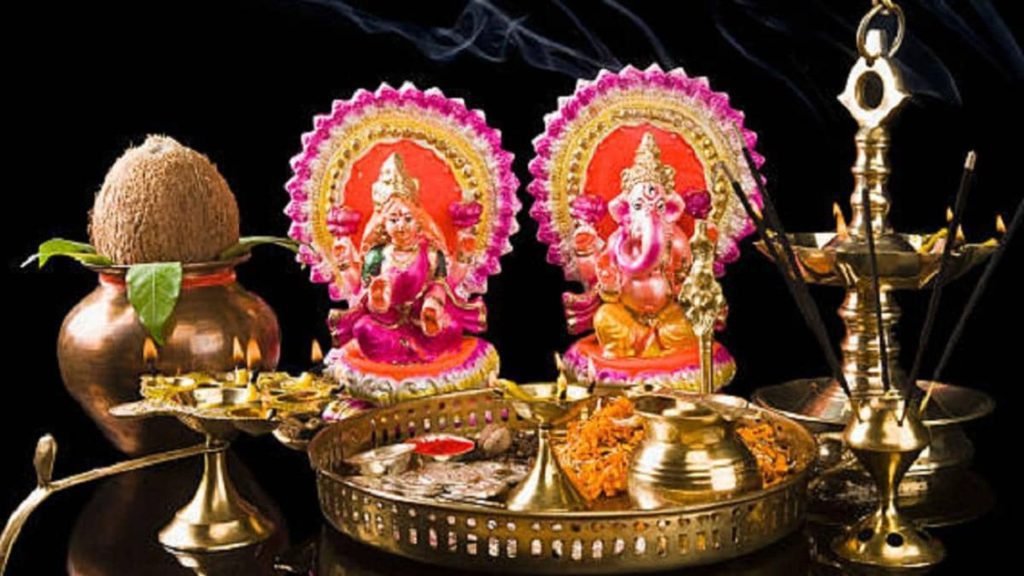
Diwali 2023 Date and Muhurat
| Events | Dates |
| Diwali | 12 November 2023 |
| Laxmi Puja Muhurat | 04:21 PM to 06:02 PM |
| Amavasya Tithi Begins | 11:14 AM on Nov 12, 2023 |
| Amavasya Tithi Ends | 11:26 AM on Nov 13, 2023 |
Performing Diwali puja, also known as Lakshmi puja, is an essential part of the Diwali festival. Here’s a step-by-step guide on how to perform Diwali puja:
Items You’ll Need:
- A clean place for the puja.
- A clay or brass oil lamp (diya).
- Ghee or oil for the lamp.
- Wicks for the lamp.
- Incense sticks (agarbatti) and a holder.
- Camphor (kapur).
- Sweets and fruits as offerings.
- A clean cloth or mat to place the idols.
- An idol or image of Goddess Lakshmi and Lord Ganesha. You can also use coins or pictures.
- Kumkum (red vermillion) and turmeric powder.
- A few coins for the puja.
- A bell.
Diwali Pooja Vidhi:
- Preparation: Clean the place where you’ll perform the puja and place a clean cloth or mat. Arrange all the items you’ll need in front of the idols or pictures.
- Lighting the Diya: Light the clay or brass lamp (diya) with ghee or oil, place wicks in it, and offer it to the deities. The diya represents the removal of darkness and the spread of light and knowledge.
- Offer Incense: Light the incense sticks and offer them to the deities. The fragrance of incense is believed to purify the surroundings.
- Offer Sweets and Fruits: Place sweets and fruits as offerings in front of the idols. You can also offer any special sweets or dishes that you have prepared for the occasion.
- Offer Camphor: Light a piece of camphor and offer it to the deities. The bright flame represents the elimination of darkness.
- Chanting Mantras: You can chant various mantras during the puja. Common mantras include “Om Shreem Maha Lakshmiyei Namaha” for Goddess Lakshmi and “Om Ganeshaya Namaha” for Lord Ganesha. Recite these mantras with devotion.
- Prayer: Offer your prayers and heartfelt wishes to Goddess Lakshmi and Lord Ganesha. Ask for their blessings, prosperity, and protection.
- Worship of Money: If you have coins or currency notes, you can also perform a symbolic worship of money by touching the coins to your forehead and offering them to the deities.
- Ringing the Bell: Ring the bell to create a melodious sound, which is believed to ward off evil spirits and usher in peace and serenity.
- Arti: Perform the aarti by moving the lit lamp in a circular motion in front of the deities while singing devotional songs. The aarti symbolises the enlightenment of the mind and soul.
- Distribution: After the puja, distribute the sweets and fruits as prasad (blessed food) to the family members.
- Fireworks and Festivities: After the puja, people often celebrate Diwali by lighting fireworks, decorating their homes, and exchanging gifts.
Remember to perform the puja with sincerity and devotion. It is a time to seek blessings, express gratitude, and usher in prosperity and happiness into your life.
The Joy of Togetherness & Festival Of Lights
It is a time that is marked by Spiritual Renewal. That is, this time should be best utilised for inner reflection and self-improvement. It’s an opportunity for individuals to rid themselves of negativity, ignorance, and impurity and replace them with knowledge, virtue, and goodness.
Diwali also emphasises acts of charity and compassion. Giving to those in need and helping the less fortunate is considered an important part of the celebration.
In essence, Diwali is a time when families come together, regardless of their geographical locations, to celebrate and strengthen bonds. It’s a time for reflection, gratitude, and spreading love and happiness.
Last Thoughts
Diwali, with its rich traditions and profound meanings, is a beautiful festival that transcends borders and brings people together. It’s a time to celebrate the victory of good over evil, light over darkness, and to cherish the warmth of family and friends. As the fireworks light up the night sky, one can’t help but feel the joy and hope that Diwali represents. However, such displays have been restricted to limit noise and other environmental pollution these days.
We hope that this Diwali brings in positivity, good health, knowledge, and goodness in both our individual lives and the world at large, empowering us to embark on a new phase, as we prepare ourselves to shed the old.
VAMA wishes you all a Very Happy Diwali!!
For more information on astrology and remedies for doshas, download the VAMA App.

FAQs
- What is Diwali?
- Diwali, also known as Deepavali, is a Hindu festival of lights celebrated to mark the victory of light over darkness and good over evil. It’s one of the most significant festivals in India and among Hindus globally.
- When is Diwali celebrated?
- The date of Diwali varies each year, as it follows the Hindu lunar calendar. It usually falls in October or November. The main day of Diwali is on the new moon day of the month of Kartik.
- How long does Diwali last?
- Diwali is a five-day festival, with each day having its own significance. The main day of Diwali falls on the third day of the celebration.
- What’s the significance of lighting lamps during Diwali?
- Lighting lamps, diyas, and candles during Diwali symbolises the triumph of light over darkness and the dispelling of negativity. It’s a way to welcome prosperity and goodness into one’s life.
- What are some traditional Diwali foods and sweets?
- Popular Diwali sweets include laddoos, jalebis, and barfis. Savoury snacks like samosas and namkeens are also commonly prepared and shared during the festival.
- Why is Rangoli made during Diwali?
- Rangoli is a colourful art form made on the floor to welcome guests and add to the festive decor. It is believed to bring good luck and positive energy into the home.
- What is the story of Lord Rama associated with Diwali?
- Diwali is often linked to the return of Lord Rama, his wife Sita, and his brother Lakshmana to Ayodhya after defeating the demon king Ravana. This event is celebrated as Rama’s victory over evil.


